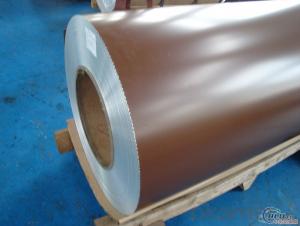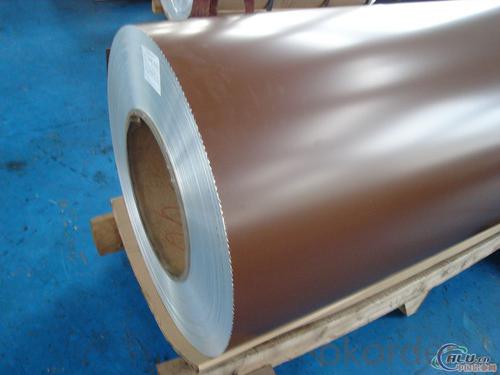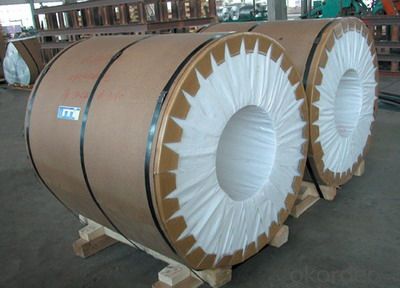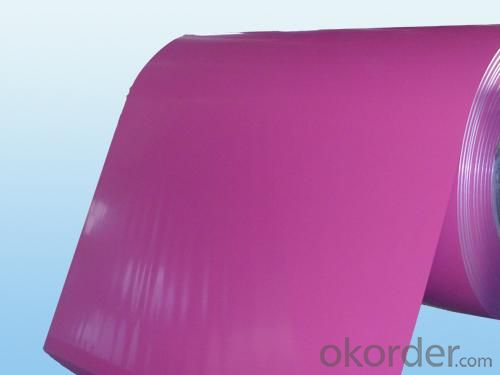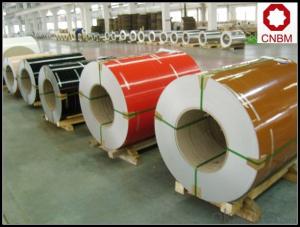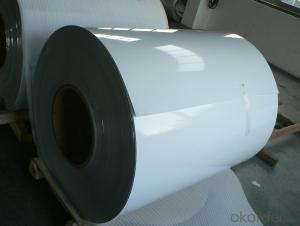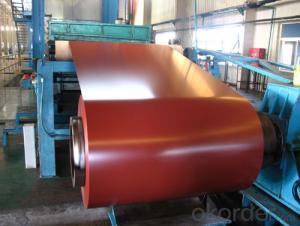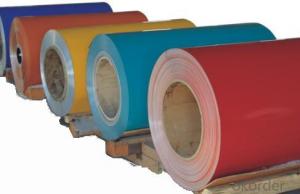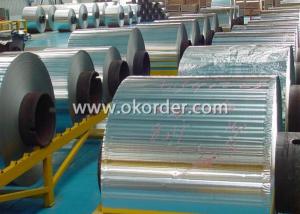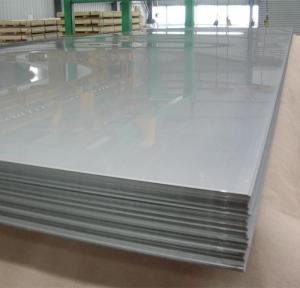Textured Aluminum Sheets - Aluminium Coils for Decoration with PVDF Color Coated
- Loading Port:
- Shanghai
- Payment Terms:
- TT OR LC
- Min Order Qty:
- 5 m.t.
- Supply Capability:
- 50000 m.t./month
OKorder Service Pledge
OKorder Financial Service
You Might Also Like
Specification
1.Structure of Aluminium Coils for Decoration with PVDF Color Coated
Aluminium Coils for Decoration with PVDF Color Coated is one semi-finished aluminium material. The coils are widly used in the building,decoration and aluminium circle. The alloy AA3104 is one of the most common alloy in the aluminium industry. Its weight is much lower than steel. So many customers choosed aluminium material instead of steel.
2. Main features of Aluminium Coils for Decoration with PVDF Color Coated
a.Competitive price---We have our own mills and can produce mill finished aluminium coils, so we can control the production cost better.
b.Professional after-sale service---We have more than 15 years exportation experience and you need not worry about the exporation problems.
c.Fast delivery time---We can control the delivery time within 35 days.
3. Image of Aluminium Coils for Decoration with PVDF Color Coated

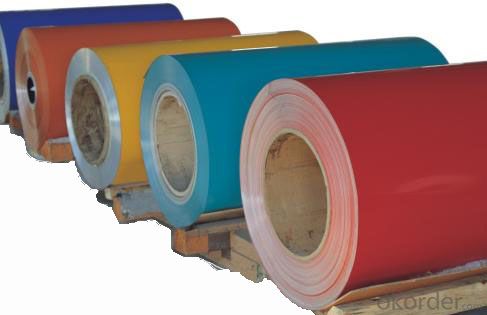

4. Product Specification of Aluminium Coils for Decoration with PVDF Color Coated
| Alloy | Temper | Thickness | Width | Weight |
| AA1100 | HO | 0.2MM-3MM | 1000-1500MM | Max 3 tons |
5.FAQ of Aluminium Coils for Decoration with PVDF Color Coated
What is the quality standard?
---Usually our standard is GB3880-2006
What is the largest width?
---It is 2300mm
What is the MOQ?
---Usually we can accept 80 tons.
- Q: Can you make tank armor using Aluminium, Polymers, Styrofoam, Explosive Reactive Armor to stop NATO DP rounds and/or HEAT rounds maybe RPG-7?
- Aluminium has a strength up to 800 N/mm2 (for its best Al-based alloys) while steels can go much higher... about 1400 N/mm2 if I recall well. The problem with aluminium is that is prompt to fatigue break which is not good with something vibrating like a rolling tank armor. Polymers are not strong enough unless you use composite materials, for ex. fibre glass or even better - carbon fibre reinforced. The problem is still that unlike steel, the strength is exceptionally high... in one direction - so pray for the impact to be mostly from this direction.
- Q: What are the different methods of forming aluminum sheets?
- Aluminum sheets can be formed using various methods, each with its own set of advantages and applications. Below are some examples of these methods: 1. Rolling: The most commonly used method for forming aluminum sheets is rolling. This involves passing a large aluminum ingot through a series of rolling mills, gradually reducing its thickness and increasing its length. The ingot is rolled multiple times until the desired thickness is achieved. Rolling is versatile, as it can produce aluminum sheets of different thicknesses and widths to suit various applications. 2. Extrusion: Another method used for forming aluminum sheets, particularly for complex cross-sectional profiles, is extrusion. In this process, a heated aluminum billet is forced through a shaped die, resulting in a continuous length of aluminum with the desired shape. Extrusion allows for the creation of intricate designs and is commonly employed in the production of structural components and frames. 3. Casting: Casting is a method used to form aluminum sheets with a specific shape or pattern. Molten aluminum is poured into a mold and left to cool and solidify. The mold can be made of different materials, depending on the complexity of the desired shape. Casting is often used for decorative purposes and in the production of architectural panels. 4. Stretch forming: Stretch forming is a specialized method used to form aluminum sheets into curved or contoured shapes. The sheet is clamped at its edges and stretched over a form using hydraulic or mechanical forces. As the sheet is stretched, it takes on the shape of the form, resulting in a curved or contoured sheet. Stretch forming is commonly utilized in the aerospace and automotive industries for components like fuselage sections and car body panels. 5. Pressing: Pressing, also known as stamping or punching, is a method employed to form aluminum sheets into specific shapes or patterns. The sheet is positioned between a die and a punch, and pressure is applied to deform the sheet. The die and punch can have various designs, allowing for the creation of simple cutouts or intricate patterns. Pressing is frequently employed in the manufacturing of automotive parts, appliances, and electronic enclosures. These are just a few examples of the various methods used to form aluminum sheets. Each method offers distinct advantages and is chosen based on the specific requirements of the desired shape, thickness, and application of the aluminum sheet.
- Q: does anyone know how much aluminium is recycled per year worldwide compared to how much is produced? Even if you know the stats just for Australia or America it would helpthanksxx
- 45% The fact that they can be recycled to produce more cans means there is no excuse for many people to unaware of aluminum recycling. People should also be aware of the benefits that can occur from it. This has created a strong awareness of the recycling nature of cans and this has been a key factor in the growth of this area. In many canteens, dinner halls and corridors across schools and places of work there is a recycling bin. Wherever people can be found drinking from a soft drink can, a specific aluminum recycling bin can be found for cans to be placed in. Compared to the recycling of many other products, it is easier to find a recycle bin. The provisions for recycling soft drink cans have been more progressively tackled and many people are aware of the need to recycle soft drink cans. This has created awareness and knowledge about recycling and this has moved from school to the outside world. One of the major tactics of marketing departments is to target children and get them to pass the message through to all the family. This is usually done in a bad manner but it can also be done promote recycling. You may see people who go around picking up cans that are thrown away without thought and send them to a recycling center. There are some recycling centers that will make payment for numbers of soft drinks that are recycled. This is a way for people to make some money. It would take a phenomenal amount of aluminum recycling to make a fortune. However, it can help the environment and make a small amount of money back so many people can find the motivation to recycle. There are many places that could be a great source of finding soft drink cans that are thrown away: - School playgrounds - The beach - The car park - Parking lots - Busy streets The amount of products that are available to be recycled continues to grow but it is unlikely that they will grow to be more popular than aluminium recycling.
- Q: Is it possible to use aluminum sheets for creating roofing tiles?
- <p>Yes, you can use aluminum sheets to make roofing tiles. Aluminum is a popular material for roofing due to its durability, lightweight, and resistance to corrosion. It can be shaped into various styles and sizes to mimic traditional roofing materials like clay or slate. Aluminum roofing tiles are also known for their energy efficiency, as they reflect heat and can help reduce cooling costs. However, it's important to ensure that the aluminum sheets are of good quality and installed correctly to achieve the desired performance and longevity.</p>
- Q: there is a magnet for other type of nails except aluminum nails
- Aluminum can't be magnetized - it's not ferrous. Put a piece of old pantyhose over the hose of a vacuum and vacuum the area... the nails will be picked up by the suction, but not sucked into the hose. Then you can just tale them off.
- Q: Are aluminum sheets suitable for automotive body panels?
- There are several reasons why aluminum sheets are suitable for automotive body panels. Firstly, aluminum is a lightweight material that improves fuel efficiency and overall vehicle performance. This leads to better acceleration, handling, and braking. Moreover, the use of aluminum body panels reduces the overall weight of the vehicle, which is especially important for electric cars as it extends their range. Secondly, aluminum has excellent corrosion resistance. It naturally forms a protective oxide layer on its surface, preventing rusting and deterioration caused by different weather conditions. This durability ensures that automotive body panels maintain their structural integrity over time. Furthermore, aluminum is highly malleable and can be easily shaped into complex forms using various manufacturing techniques such as stamping, extrusion, and hydroforming. This allows for greater design flexibility, enabling automakers to create sleek and aerodynamic body styles. Additionally, aluminum can be easily joined through welding or adhesive bonding, simplifying the assembly and repair of automotive body panels. Moreover, aluminum is a sustainable material as it is highly recyclable. Recycling aluminum requires significantly less energy compared to primary production, resulting in reduced greenhouse gas emissions. This aligns with the growing emphasis on sustainability and environmental consciousness in the automotive industry. In conclusion, the use of aluminum sheets in automotive body panels offers numerous advantages such as improved fuel efficiency, corrosion resistance, design flexibility, and sustainability. These factors make aluminum a suitable and increasingly popular choice for automakers looking to enhance the performance, durability, and environmental friendliness of their vehicles.
- Q: What is aluminium plate for?
- Two outdoor and indoor, outdoor curtain wall decoration, indoor ceiling (such as aluminum pinch plate, aluminum grille, aluminum hanging tablets, etc.), color diversity, but also can be made imitation wood grain, imitation marble and other colors, widely used
- Q: What is the final concentration of aluminum cation?
- You have to be able to determine the number of moles of Al+3 that each solution contributes to the final solution: 1. aluminum chloride: AlCl3 Multiply the volume (in L) by the molarity to determine the number of moles of each compound dissolved in solution. 0.0431 L x 0.279 M = 0.0120 mol AlCl3 in solution When the AlCl3 in placed in the water, it dissociates to form the following ions: AlCl3 -- Al+3 + 3Cl- So for every one mole of AlCl3 placed in the water, one mole of aluminum ions will dissociate. Therefore, since we have 0.0120 mole of AlCl3 in the solution, that means that the aluminum chloride will contribute 0.0120 Al+3 ions to the final solution. 2. Aluminum sulfate: Al2(SO4)3 Multiply the volume (in L) by the molarity to determine the number of moles of each compound dissolved in solution. 0.0146 L x 0.464 M = 0.00677 mol Al2(SO4)3 in solution When the Al2(SO4)3 in placed in the water, it dissociates to form the following ions: Al2(SO4)3 -- 2Al+3 + 3(SO4)-2 So for every one mole of Al2(SO4)3 placed in the water, two mole of aluminum ions will dissociate. Use the mole ratios of the dissociation reaction to determine the number of moles of Al+3 ions that the aluminum sulfate contributes to the solution. 0.00677 mol Al2(SO4)3 x (2 mol Al+3 ions / 1 mol Al2(SO4)3) = 0.01354 mol Al+3 ions Therefore, the total number of Al+3 ions in solution is the sum: 0.01354 + 0.0120 = 0.02554 mol Al+3 ions The last piece of information needed to determine the concentration of the final solution is the volume of the final solution. Since the two volumes were mixed, the volume of the final solution will be the sum of the two solutions. 0.0431 L + 0.0146 L = 0.0577 L Therefore, to calculate molarity: Molarity = moles of solute / liters of solution Molarity = 0.02554 mol / 0.0577 L = 0.443 M Al+3
- Q: What is the melting point of 101 aluminum sheets?
- Approximately 660 degrees Celsius or 1220 degrees Fahrenheit is the melting point of 101 aluminum sheets.
- Q: Where is a good website to get a brand new sealed in box Aluminum macbook.
- there are none, i know i sucked it up and went to apple, worth every penny. good luck!
Send your message to us
Textured Aluminum Sheets - Aluminium Coils for Decoration with PVDF Color Coated
- Loading Port:
- Shanghai
- Payment Terms:
- TT OR LC
- Min Order Qty:
- 5 m.t.
- Supply Capability:
- 50000 m.t./month
OKorder Service Pledge
OKorder Financial Service
Similar products
Hot products
Hot Searches
Related keywords
